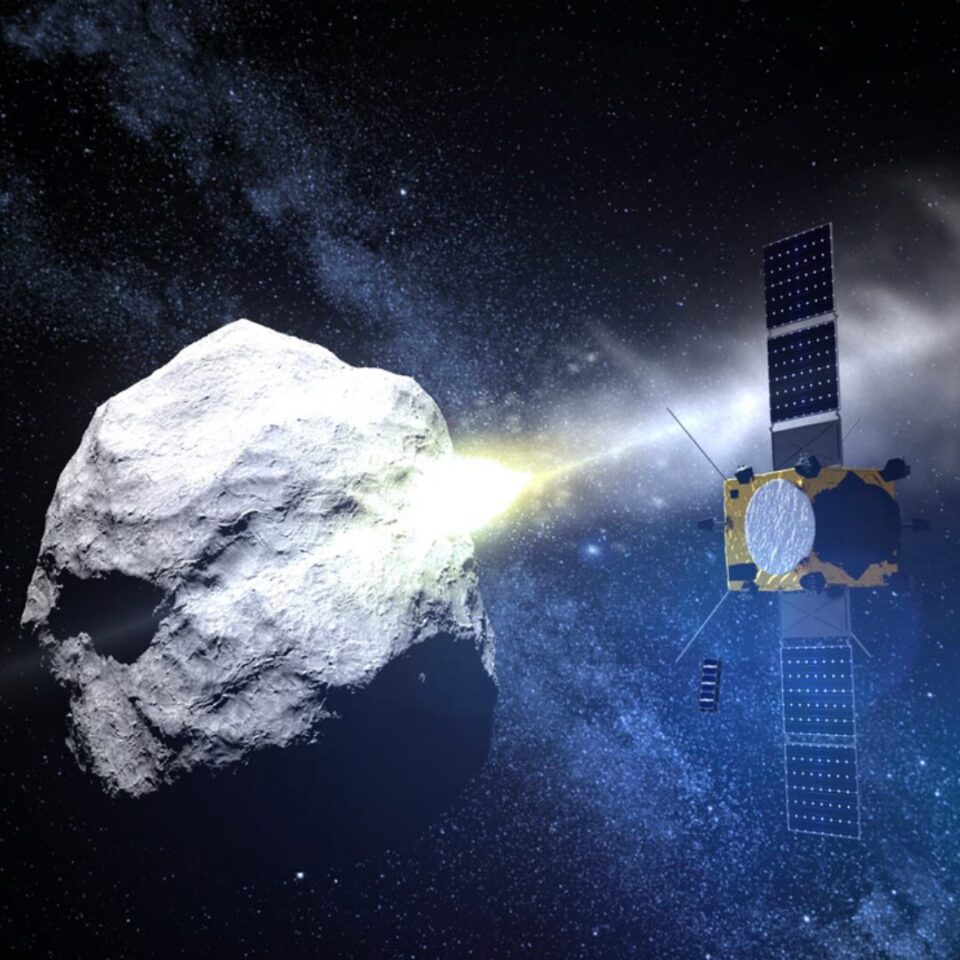It was another win for science this week as NASA ups its game at planetary defence, taking the fight to space.
While there was no danger present to the planet on this occasion, NASA wanted to test the Earth’s defences to ensure that should the time come where we need them, they are ready.
And as many people will claim, the best defence is a good offence. That’s exactly what NASA had in mind as it hurled a rocket ship at a velocity of 22,000km per hour straight at a meteor to divert the rock’s course.
Our weapon of choice – DART (Double Asteroid Redirection Test) – roughly the size of a vending machine, was sent out on a mission to torpedo Dimorphos, an asteroid the size of a football pitch. The idea being that if DART can hit Dimorphos directly with enough force, it can adjust the rock’s orbit and knock it from its current course.
Think it sounds simple enough?
Well, just to make sure you fully appreciate just how amazing this is: NASA had to fly this small rocket ship, unmanned, 11 MILLION KILOMETRES, and fire it straight into this rock that is only the size of a football field flying through the immense vastness of space.
Oh yeah, they also had to make sure they avoided hitting the rock’s neighbour, Didymos – a 780m wide meteor.
This is especially important because it shows NASA isn’t just throwing these ships into the sky and hoping for the best but they’re also accurate and hitting only their desired targets, regardless of any nearby obstacles. And even then, DART was only 17m off of the direct centre of Dimorphos. Talk about accuracy.
It’s amazing to think that this is what some members of humanity are pulling off, yet I’d run out of fingers while counting how many of my friends can’t parallel park…
Luckily for those of us fascinated by the achievement, not only was DART streaming images right up until the crash but right behind DART, was LICIACube, an Italian satellite taking its own images of the impact itself. While it appears as if some of the images are still to be beamed to Earth/released to us, we’ve already had some of the below shared.
While all signs currently point to a successful mission, we won’t know for a few months just how successful it was until NASA can assess the rock’s new trajectory and speed.
In the meantime, the significance of the world’s first planetary defence mission cannot be understated
While on this occasion the size of the meteor wouldn’t have devastated the planet, we know that at least three collisions so far have caused mass extinctions, including that of the dinosaurs. Unless we want to end up like our prehistoric friends, I’m sure we can agree we hope NASA keeps doing what it’s doing.
Not to mention, that it only takes a 140m asteroid to create a 1-2km crater that could induce mass casualties on Earth. So even if it’s not going to result in extinction-level damage, we’d still prefer to blast these meteors away, before they blast us away.
What’s also interesting is that while we’re all celebrating now, the mission actually began with the launch of DART back in November 2021 and in fact, this is one of the most important factors of this method of planetary defence: Time.
Not just because the rocket ship needs the time to get to its target but more importantly, it needs to reach it in enough time, while it’s far enough away from Earth, that the targeted collision will actually divert the meteor from its course.
Despite slamming into the rock at such immense speeds, the meteor’s speed will only actually be shifted by a fraction of a millimetre per second.
For that to actually make a significant enough difference that it wouldn’t still hit Earth, the targeted collision needs to occur years before the potential crash on Earth, which is why NASA is always looking 10 steps ahead – and we’re very grateful for it!
Overall, this is a massive achievement for NASA and a testament to the amazing things we can now do across space – if only we were as good at problem-solving down on Earth!


